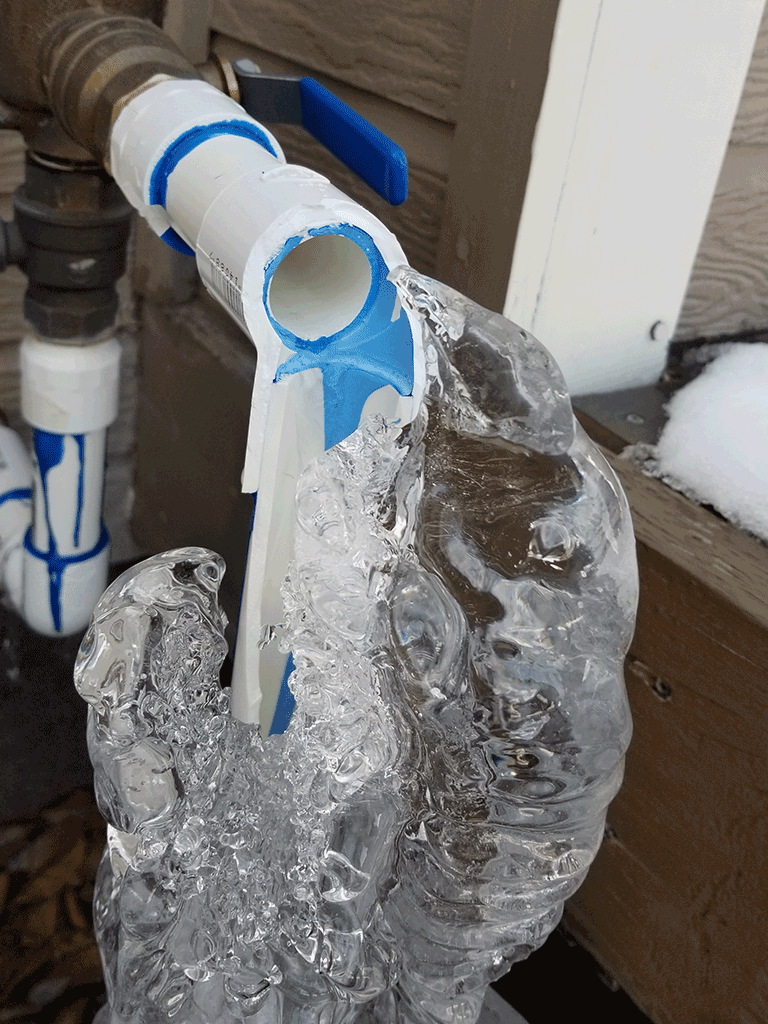Protecting Your Pipes from Freezing: Effective Methods
Protecting Your Pipes from Freezing: Effective Methods
Blog Article
Here below you will find some sound answers on the subject of Winter Plumbing Precautions: Preventing Frozen Pipes.

Winter can damage your pipes, especially by freezing pipes. Here's how to avoid it from happening and what to do if it does.
Intro
As temperature levels decrease, the danger of frozen pipes increases, possibly resulting in expensive fixings and water damage. Recognizing how to avoid frozen pipes is vital for home owners in cool environments.
Avoidance Tips
Protecting at risk pipelines
Cover pipes in insulation sleeves or utilize warmth tape to secure them from freezing temperature levels. Concentrate on pipelines in unheated or outside areas of the home.
Heating methods
Maintain interior spaces properly warmed, especially areas with plumbing. Open up closet doors to allow warm air to distribute around pipes under sinks.
How to determine frozen pipelines
Try to find lowered water circulation from taps, uncommon smells or sounds from pipes, and visible frost on exposed pipes.
Long-Term Solutions
Structural adjustments
Consider rerouting pipes far from outside wall surfaces or unheated areas. Add added insulation to attic rooms, basements, and crawl spaces.
Upgrading insulation
Buy top quality insulation for pipelines, attic rooms, and wall surfaces. Proper insulation aids keep consistent temperature levels and lowers the danger of icy pipes.
Shielding Outside Plumbing
Yard hose pipes and exterior faucets
Separate and drain yard hoses prior to winter. Set up frost-proof spigots or cover outside taps with insulated caps.
Comprehending Icy Pipes
What causes pipes to ice up?
Pipelines ice up when subjected to temperature levels listed below 32 ° F (0 ° C) for prolonged durations. As water inside the pipelines freezes, it broadens, taxing the pipe wall surfaces and potentially creating them to break.
Risks and damages
Frozen pipelines can bring about supply of water interruptions, home damage, and costly repair services. Burst pipes can flood homes and cause extensive structural damage.
Signs of Frozen Pipes
Recognizing icy pipes early can prevent them from bursting.
What to Do If Your Pipelines Freeze
Immediate actions to take
If you suspect frozen pipelines, keep taps available to ease pressure as the ice thaws. Use a hairdryer or towels taken in hot water to thaw pipelines slowly.
Conclusion
Protecting against frozen pipelines needs aggressive steps and fast responses. By comprehending the reasons, indicators, and preventive measures, house owners can protect their plumbing throughout winter.
5 Ways to Prevent Frozen Pipes
Drain Outdoor Faucets and Disconnect Hoses
First, close the shut-off valve that controls the flow of water in the pipe to your outdoor faucet. Then, head outside to disconnect and drain your hose and open the outdoor faucet to allow the water to completely drain out of the line. Turn off the faucet when done. Finally, head back to the shut-off valve and drain the remaining water inside the pipe into a bucket or container. Additionally, if you have a home irrigation system, you should consider hiring an expert to clear the system of water each year.
Insulate Pipes
One of the best and most cost-effective methods for preventing frozen water pipes is to wrap your pipes with insulation. This is especially important for areas in your home that aren’t exposed to heat, such as an attic. We suggest using foam sleeves, which can typically be found at your local hardware store.
Keep Heat Running at 65
Your pipes are located inside your walls, and the temperature there is much colder than the rest of the house. To prevent your pipes from freezing, The Insurance Information Institute suggests that you keep your home heated to at least 65 degrees, even when traveling. You may want to invest in smart devices that can keep an eye on the temperature in your home while you’re away.
Leave Water Dripping
Moving water — even a small trickle — can prevent ice from forming inside your pipes. When freezing temps are imminent, start a drip of water from all faucets that serve exposed pipes. Leaving a few faucets running will also help relieve pressure inside the pipes and help prevent a rupture if the water inside freezes.
Open Cupboard Doors
Warm your kitchen and bathroom pipes by opening cupboards and vanities. You should also leave your interior doors ajar to help warm air circulate evenly throughout your home.

Hopefully you enjoyed our excerpt about How to prepare your home plumbing for winter weather. Thanks so much for taking the time to browse our piece of content. Enjoyed reading our blog entry? Please quickly share it. Let other people locate it. Thanks for being here. Kindly visit our blog back soon.
Book With Us Today! Report this page